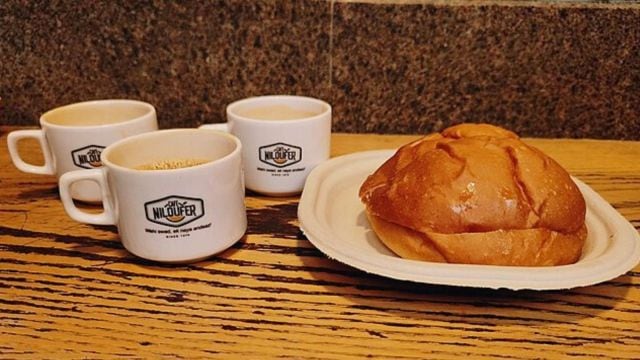📣 For more lifestyle news, click here to join our WhatsApp Channel and also follow us on Instagram
Are Hyderabad’s Irani cafes on the brink of extinction?
Irani cafes first appeared in India in the 18th and 19th centuries, introduced by Persian immigrants fleeing persecution and famine in Iran.
 A quirky Irani cafe in Pune has gone viral for its unconventional and humorous set of rules displayed on its menu (Wikimedia Commons photo)
A quirky Irani cafe in Pune has gone viral for its unconventional and humorous set of rules displayed on its menu (Wikimedia Commons photo)A lingering fragrance of bun maska, freshly cooked samosas, and cups of piping hot Irani chai: these are the iconic sights and smells that define Hyderabad’s Irani cafes. For more than a century, these Persian-style establishments have been an integral part of the city’s culture.
The marble-topped tables, old-style clocks, and chequered floors are testaments to a bygone era.
Irani cafes first appeared in India in the 18th and 19th centuries, introduced by Persian immigrants fleeing persecution and famine in Iran.
While Mumbai and Pune are famous for these cafes; Hyderabad, with its rich history and strong ties to Persian trade, boasts the second-highest number of Irani cafes in the country after Mumbai.
These cafes have played a significant role in Hyderabad’s social life, serving as more than just places to enjoy chai.
Historian Mohammed Safiullah notes that Irani cafes broke down social barriers, providing secular spaces where people from all religions and castes could gather.
“Irani cafes in Hyderabad have stood as symbols of secularism,” adds historian Paravastu Lokeshwar. However, these once-thriving cafes are now under threat.
What’s causing the decline?
Two decades ago, Hyderabad had an estimated 450 Irani cafes; today, only 125 remain. Jaleel Farooq Rooz, owner of The Grand Hotel, attributes this decline to rising competition from fast-food chains and skyrocketing real estate prices.
“We used to sell 8,000-9,000 cups a day once. Now we sell just 4,000 cups a day,” Rooz laments.
The rapid urbanisation of Hyderabad, driven by the IT boom in the 1990s, transformed the city and introduced global fast-food chains that offer more amenities and options than the traditional Irani cafes.
Many café owners, unable to compete with these modern establishments, have been forced to close their doors.
Inflation has further contributed to the decline. The rising costs of tea powder, milk, and other ingredients have made it increasingly difficult for these cafes to survive.
Additionally, the current generation of Iranian families in Hyderabad shows little interest in continuing the family business, with many opting for different careers or migrating to other countries.
Keeping traditions alive
Despite the challenges, some cafe owners are determined to keep their traditions alive.
Syed Mohammed Razak, who manages the Red Rose Restaurant, has introduced new dishes to attract more customers and is using his graphic design skills to promote the café online.
“I want to continue my family’s legacy,” Razak says.
Loyal customers also remain dedicated to these cafes. Yanni, a regular at the Grand Hotel, shares, “Irani tea is a part of my life. I love the taste and drink it every time I step out. There is nothing like it even today.”
Despite the lasting appeal of Hyderabad’s Irani cafes—which continue to attract patrons who value their unique mix of history, culture, and flavour—the future of these cherished establishments is uncertain as modern pressures mount.
(With inputs from BBC)
📣 For more lifestyle news, click here to join our WhatsApp Channel and also follow us on Instagram
Photos





- 01
- 02
- 03
- 04
- 05





















